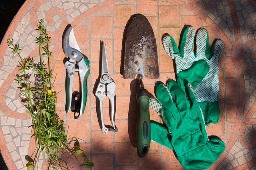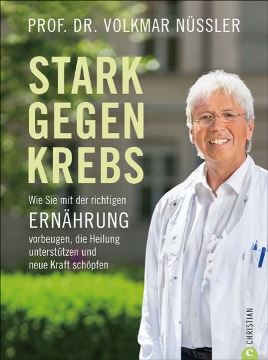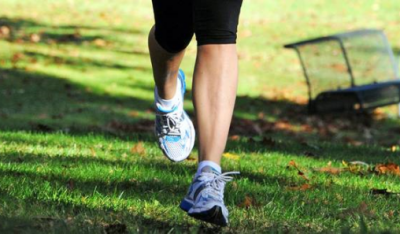“Sport” and “cancer” are two completely opposite terms. Sport stands for physical activity, health and power – cancer, in contrast, stands for a severe illness with restricted physical fitness and quality of life. Despite this contradiction, in recent years it has been shown very convincingly that physical activity (also referred to as “exercise therapy”) can significantly improve the quality of life as well as the prognosis of the cancer.
But what exactly is “physical or sport-based activity or exercise therapy”, and how are different activities assessed? What is meant by “moderate and intensive”? How do we measure “intensity”? It it better to swim, to go for a walk or to do some strength training?
 In order to improve comparability of physical activity, the MET unit has been introduced as a measure for oxygen consumption and metabolic rate. MET values define the energy consumed within one hour of the respective activity. They are independent of the type of activity. The following list shows that, in addition to recreational activities, physical activities at work or in the household also lead to high MET values. This means that garden work, a job as a nurse or a postman can also have a positive effect in the prevention and treatment of cancer.
In order to improve comparability of physical activity, the MET unit has been introduced as a measure for oxygen consumption and metabolic rate. MET values define the energy consumed within one hour of the respective activity. They are independent of the type of activity. The following list shows that, in addition to recreational activities, physical activities at work or in the household also lead to high MET values. This means that garden work, a job as a nurse or a postman can also have a positive effect in the prevention and treatment of cancer.
| Table 1: MET values for different activities. MET stands for the energy consumption of the respective activity in one hour, modified according to Ainsworth et al. 2000 | |
| Dancing | 4.5 |
| Tennis | 7 |
| Walking, low intensity (c. 4 km/h) | 3 |
| Walking, moderate intensity (c. 5 km/h) | 4 |
| Walking, high intensity (c. 6 km/h) | 5 |
| Hiking | 6 |
| Cycling, low intensity | 4 |
| Aqua aerobics | 4 |
| Yoga | 2.5 |
| Aerobic gymnastics | 8 |
| Jazzdance | 6 |
| Playing with animals, running | 3.0 |
| Playing with animals, sitting | 2.2 |
| Garden work | 5 |
| General kitchen work (Cooking, washing dishes, moderate intensity) | 3.3 |
| Grocery shopping | 2.3 |
| Taking groceries upstairs | 7.5 |
Examples: An exercise therapy of 9 MET hours or more per week, the risk of developing cancer, but also the prognosis for many types of cancer can be reduced by up to 30%.
 How can 9 MET hours per week be achieved? Look at the table and sum up your activities – for example, you can achieve your goal by walking at a fast pace (“not simply strolling along”) for one hour three times a week – this is particularly recommended in autumn. 3 hrs x 3 MET = 9 MET hrs per week. Congratulations, you have achieved your goal.
How can 9 MET hours per week be achieved? Look at the table and sum up your activities – for example, you can achieve your goal by walking at a fast pace (“not simply strolling along”) for one hour three times a week – this is particularly recommended in autumn. 3 hrs x 3 MET = 9 MET hrs per week. Congratulations, you have achieved your goal.
You don’t have the time, or it is too strenuous for you? You can simply vary the activities – for example 4 x 30 min walking and 1 x 1 hr cycling per week. Sum of activities: 2 hrs x 3 MET walking + 1 hm x 4 MET cycling = 10 MET hrs per week.
 Or, according to this calculation, 1 hour of garden work and 3 times 30 min of walking per week equal: 1 hr x 4 MET garden work + 1.5 hrs x 3 MET walking = 95 MET hrs per week.
Or, according to this calculation, 1 hour of garden work and 3 times 30 min of walking per week equal: 1 hr x 4 MET garden work + 1.5 hrs x 3 MET walking = 95 MET hrs per week.
This table enables you to adjust the recommendations for physical activity (exercise therapy) to suit your individual preferences, physical capacity and sporting interests. Choose the activity or sport that suits you best and which you enjoy. Alternate between the activities to prevent boredom. You can find detailed MET tables here.
 Please always keep in mind that any kind of activity and even short exercise units already have a positive effect on your health. The most important thing is to do regular activities – and enjoy them! The training effect will gradually set in all by itself.
Please always keep in mind that any kind of activity and even short exercise units already have a positive effect on your health. The most important thing is to do regular activities – and enjoy them! The training effect will gradually set in all by itself.
We would like to thank Mr. Prof. Dr. med. Michael Schoenberg for this blog post. You can send questions and comments to him at mhschoenberg@gmail.com. You can find additional information on the topic exercise as a cancer patient, along with numerous tips for nutrition and recipes, in the Tumour Center’s new book “Stark gegen Krebs” (Strong against cancer).
